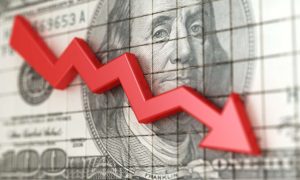Identifying cheap stocks in the market seems like an obvious move to execute the buy low, sell high strategy, but it can lead investors down unexpectedly treacherous paths. Cheap stocks are often priced that way for a reason, and overloading on these names can expose investors to bad companies, low-growth industries, and cyclical time bombs. Consider the following when adding cheap stocks to your portfolio.
Nominal price per share should (usually) be irrelevant
Beginning investors might look at a $10 stock and determine that it is cheaper than a $20 stock since they can purchase more shares for the same dollar amount. In a simple sense, this is true, but that’s a backward approach to portfolio creation.
Investors should determine an overall amount of savings that should be deployed into the stock market, then spread that amount across different investments in proportions based on an investment strategy. Thus, each stock should have a predetermined percentage allocation in a portfolio, and a certain number of shares should be purchased to reach that amount. This gives the investor control over exposure. If your portfolio is not large enough to allocate in proportion across different stocks, consider mutual funds or ETFs instead.
Moreover, analysis and allocation should be based on price relative to fundamental operating metrics of the underlying company, such as earnings per share (EPS), free cash flow, dividends per share, book value, or earnings before interest, taxes, depreciation, and amortization (EBITDA). A $10 stock for a company with meager $0.10 EPS and no growth is actually more expensive than a $20 stock that is reliably delivering stable $1 dividends every year. Analytical approaches to valuation provide a better understanding of pricing and keep people away from things like penny stocks.
Cheap stocks can be value traps
Value traps are stocks that look enticingly cheap but are ultimately poor investments. Value traps can take different forms. Sometimes they are companies with growth potential that are unlikely to attain those levels, such as biotechs with one promising compound in clinical trials that won’t beat competitors to market. Alternatively, a value trap could be a formerly successful company that is suffering operationally, starting a steady decline from which it will never recover. J.C. Penney was a famous example roughly a decade ago, and that stock looked incredibly cheap relative to retail peers for some time, but investors were justifiably fleeing a name that was experiencing drastic contractions that would eventually lead to bankruptcy.
There’s no doubt that investors have some opportunities to capitalize on marginal mispricings in the stock market, or to take advantage of irrational behavior that can create attractive entry positions during tumult. That said, global capital markets are mostly efficient, and it’s unlikely that the entire universe of fund managers, portfolio managers, artificial intelligence, and individual traders have simply overlooked the merits of a well-known stock. If your screens and analysis identify a valuation that’s drastically too good to be true, then you should probably dig a little deeper.
Crisis-stricken industries, such as banking in 2009 or travel and hospitality in 2020, might experience so much uncertainty and investor flight that every stock in the group looks like a low-risk proposition. Some companies in those groups will almost certainly weather the storm and provide some outsized returns. Others will go out of business or get absorbed by larger competitors for unattractive valuations. Investors dabbling in these circumstances have to pick correctly, and the entire industry may emerge weaker or smaller than prior to the crisis. Similarly, situations arise when companies with operational concentration in certain countries become inexpensive, as geopolitical tensions, structural issues with a regional economy, or trade wars raise the likelihood of operational challenges in the upcoming years. Be wary of these traps.
Diversification can become a major problem
Portfolio diversification ensures that invested assets won’t suffer too dramatically when unexpected bad times reach any specific industry, country, or type of stock. Focusing too heavily on cheap stocks creates serious impediments for diversification. Some industries, such as raw materials, industrials, banking, and non-cyclical consumer goods tend to maintain low valuation ratios, whereas certain technology and pharmaceutical stocks regularly carry high valuation ratios. The latter tend to have better growth prospects, so a focus on cheap stocks will rob investors of ample exposure to high growth opportunities.
That approach would also jeopardize performance during times in which those lower growth industries struggle. In general, investors should balance allocation between highly volatile and less volatile stocks, because each group has periods of superior returns across a full market cycle.
Finally, chasing cheap stocks can over-expose investors to cyclical companies in the wrong part of the economic cycle. Industries such as auto parts, steel, construction, or durable goods tend to produce their best financial results during the final quarters of economic cycles, but they suffer the most when recessions hit. The market is aware of this pattern, and these stocks often have cheap valuation ratios relative to historical averages right at cyclical peaks. This tends to be a bad time to buy, but a strategy of buying cheap stocks will lead investors directly into that misstep.
The post Why Buying Cheap Stocks Is the Wrong Investing Strategy appeared first on The Motley Fool and is written by Ryan Downie
Original source: The Motley Fool






